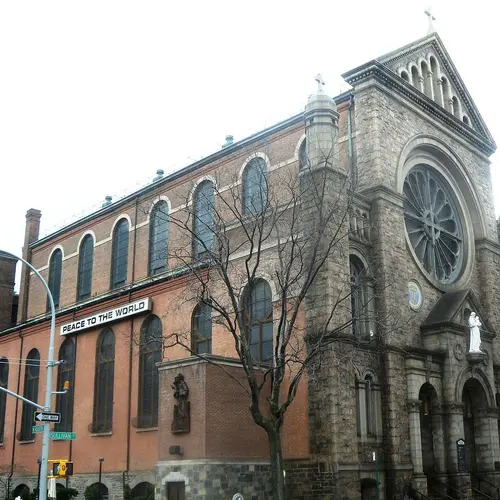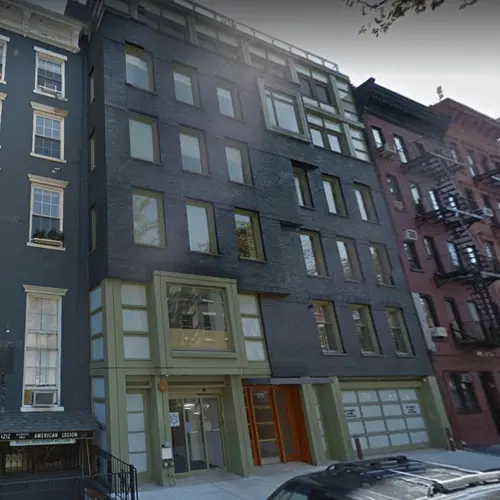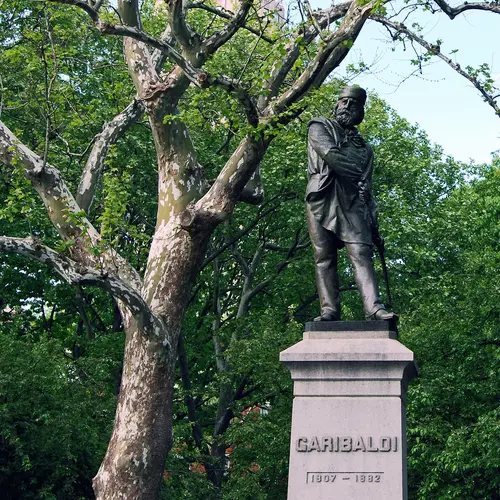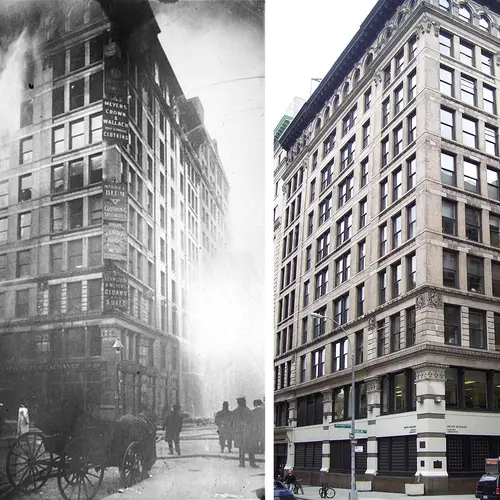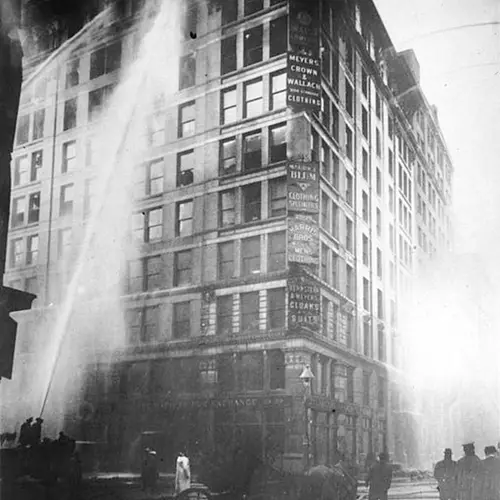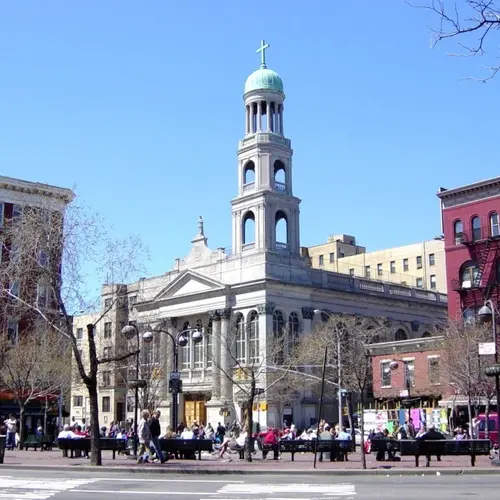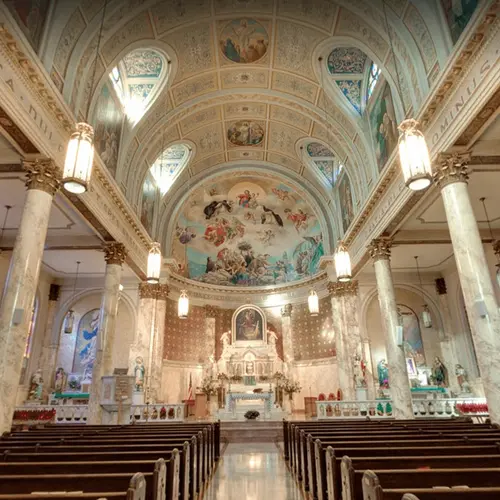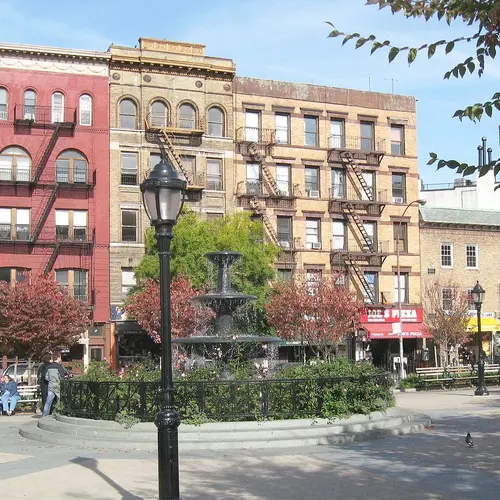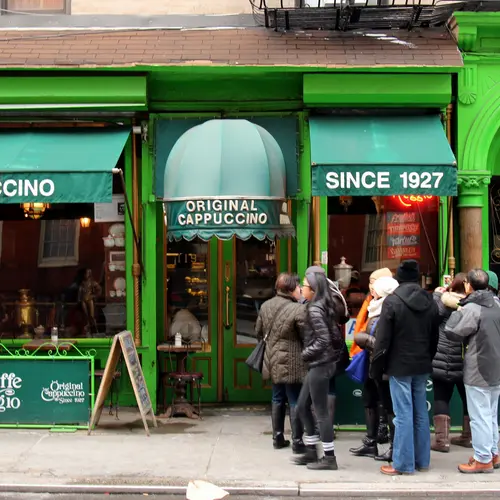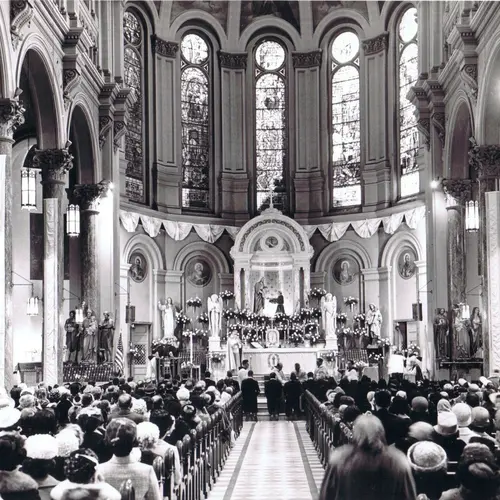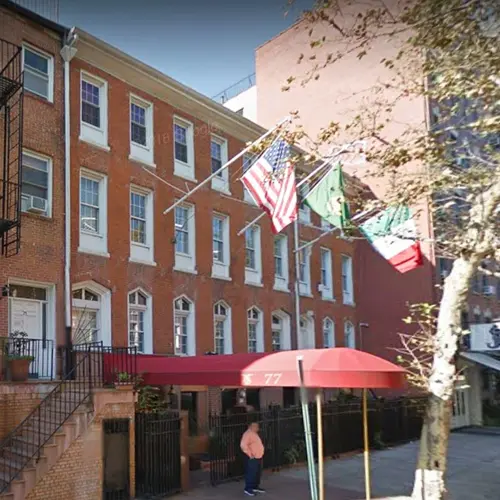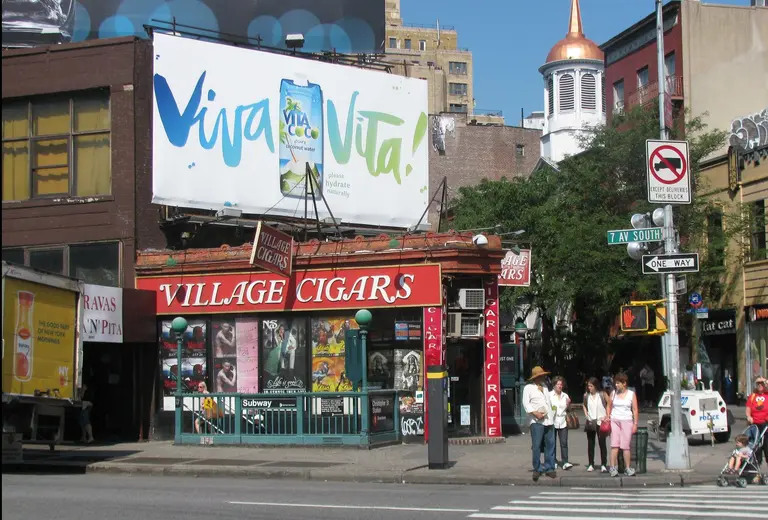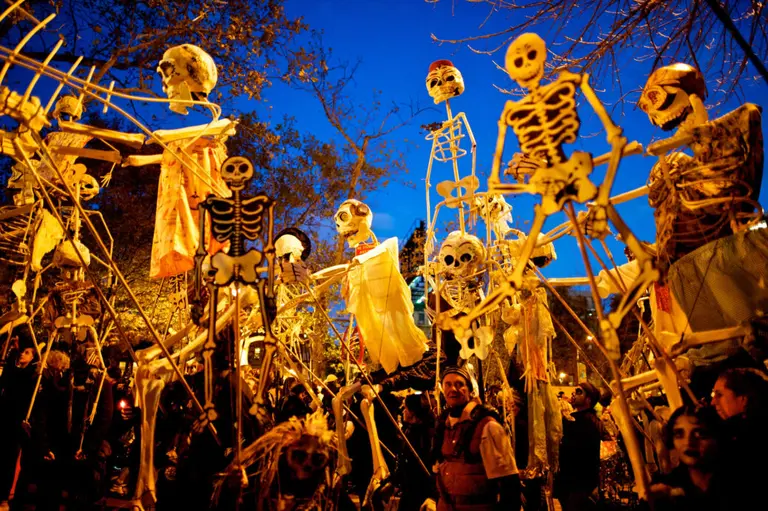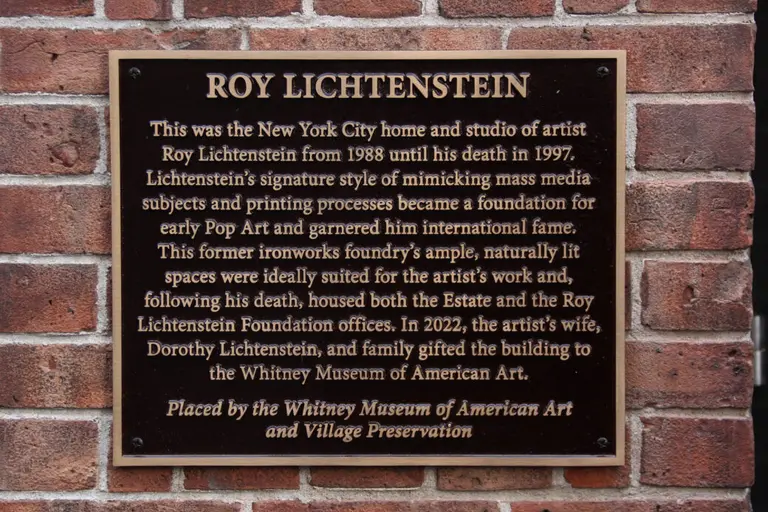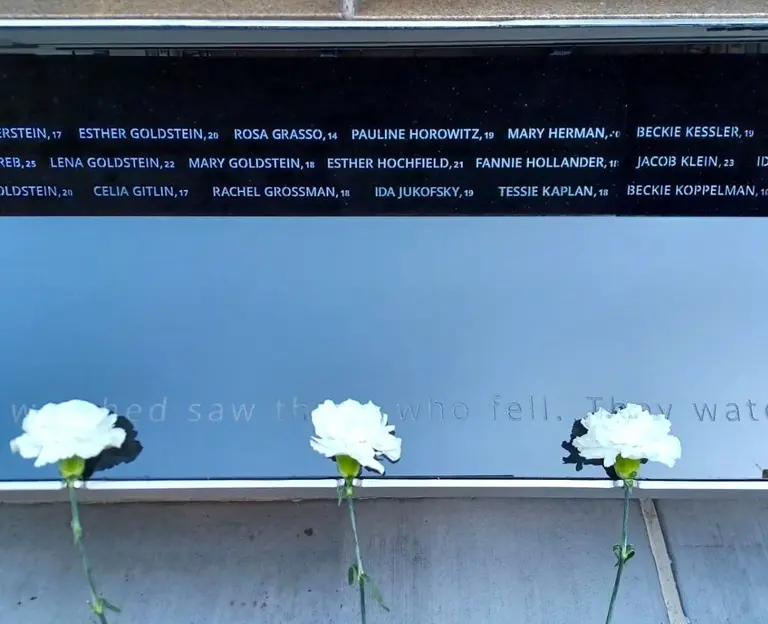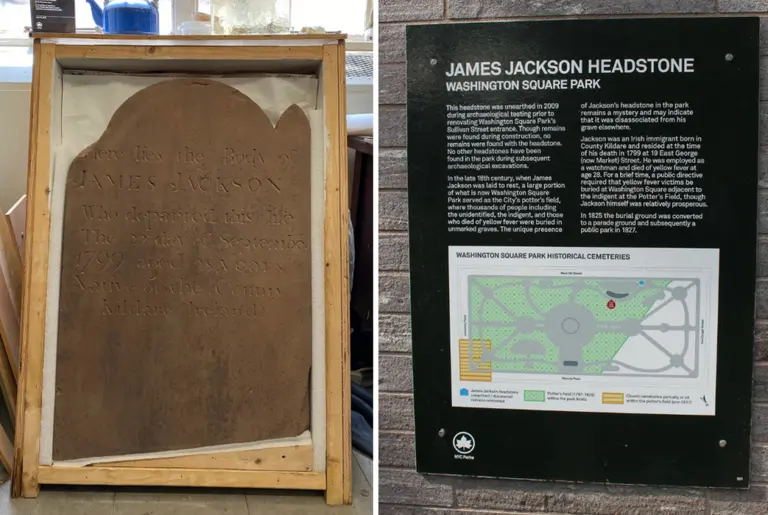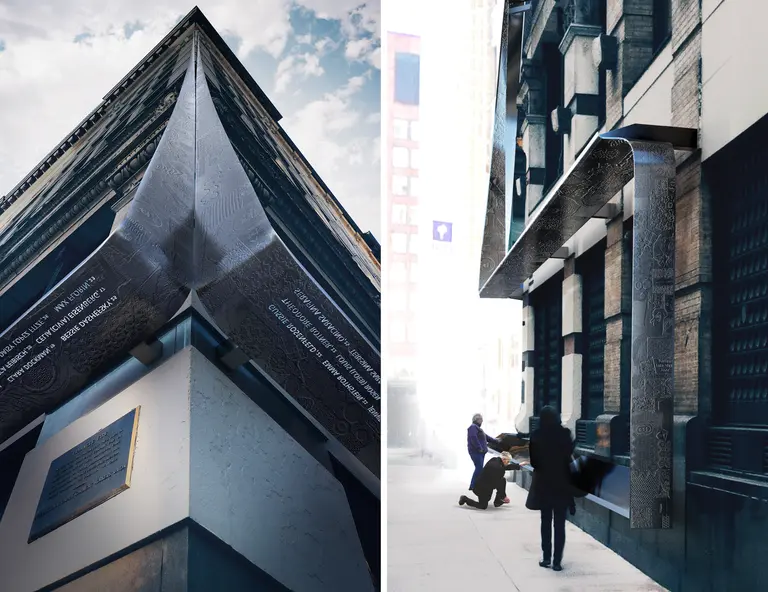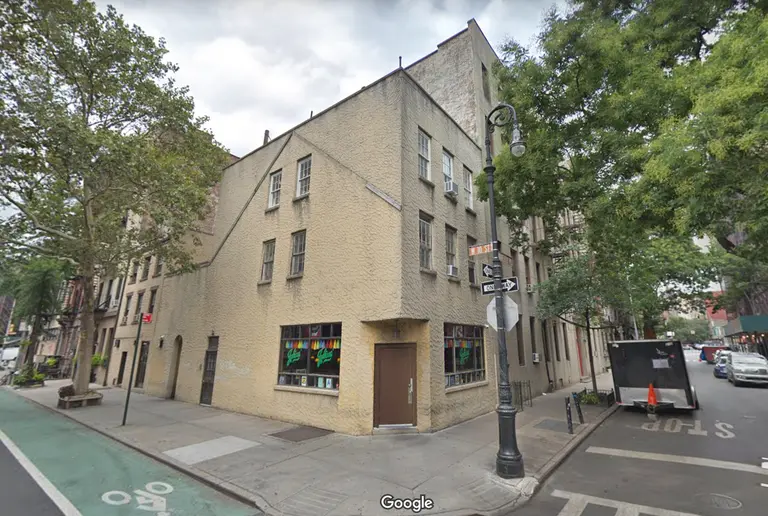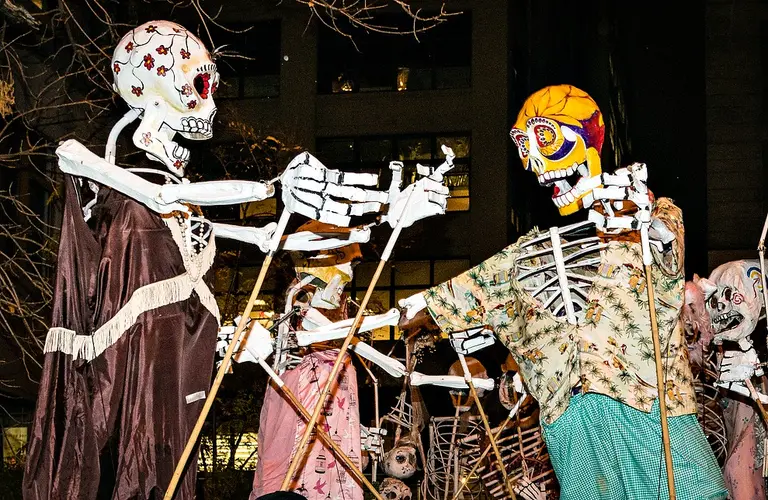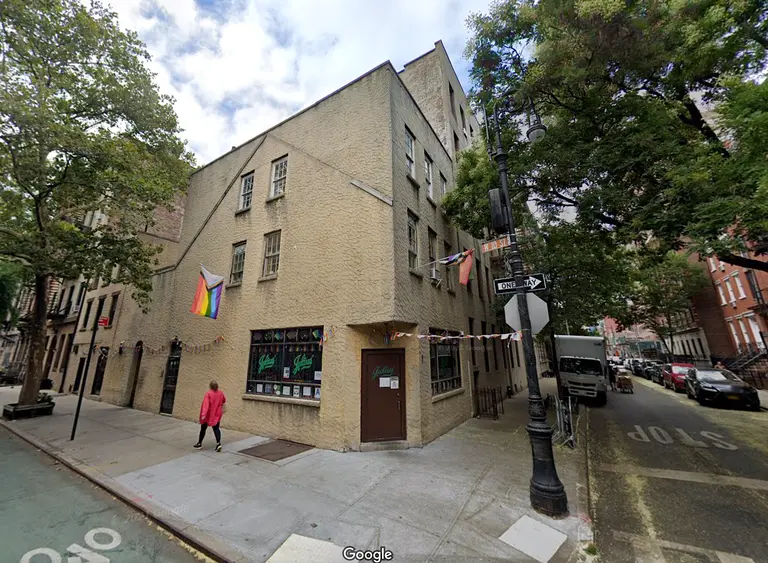Uncovering the sites of the South Village’s secret ‘Little Italy’
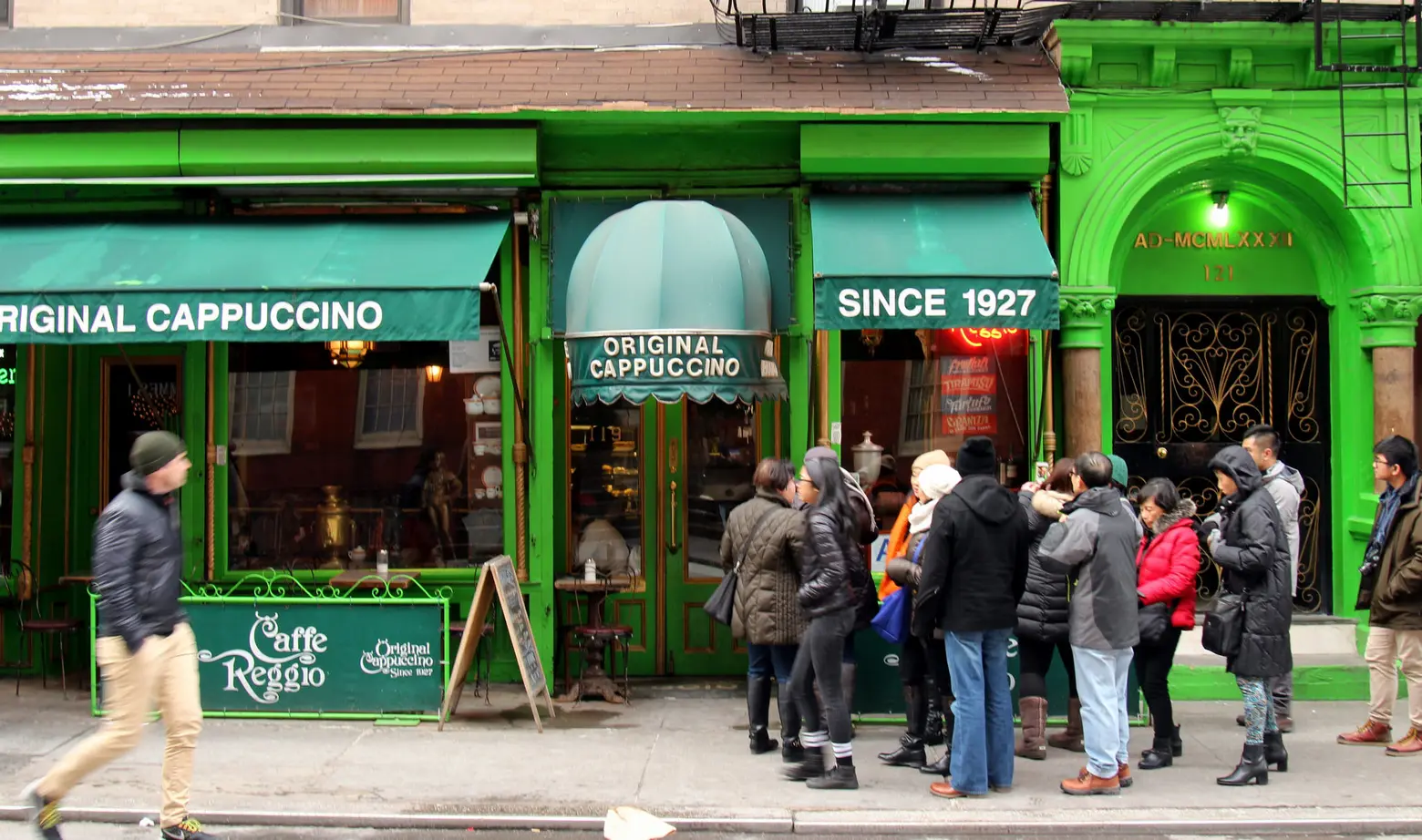
Caffe Reggio, via Prayitno/Flickr
Many think of Little Italy’s Mulberry Street or the Bronx’s Arthur Avenue as the centers of Italian-American life and culture in New York. But some of the most historically significant sites relating to the Italian-American experience in New York can be found in the Greenwich Village blocks known as the South Village–from the first church in America built specifically for an Italian-American congregation to the cafe where cappuccino was first introduced to the country, to the birthplace of Fiorello LaGuardia, NYC’s first Italian-American mayor.
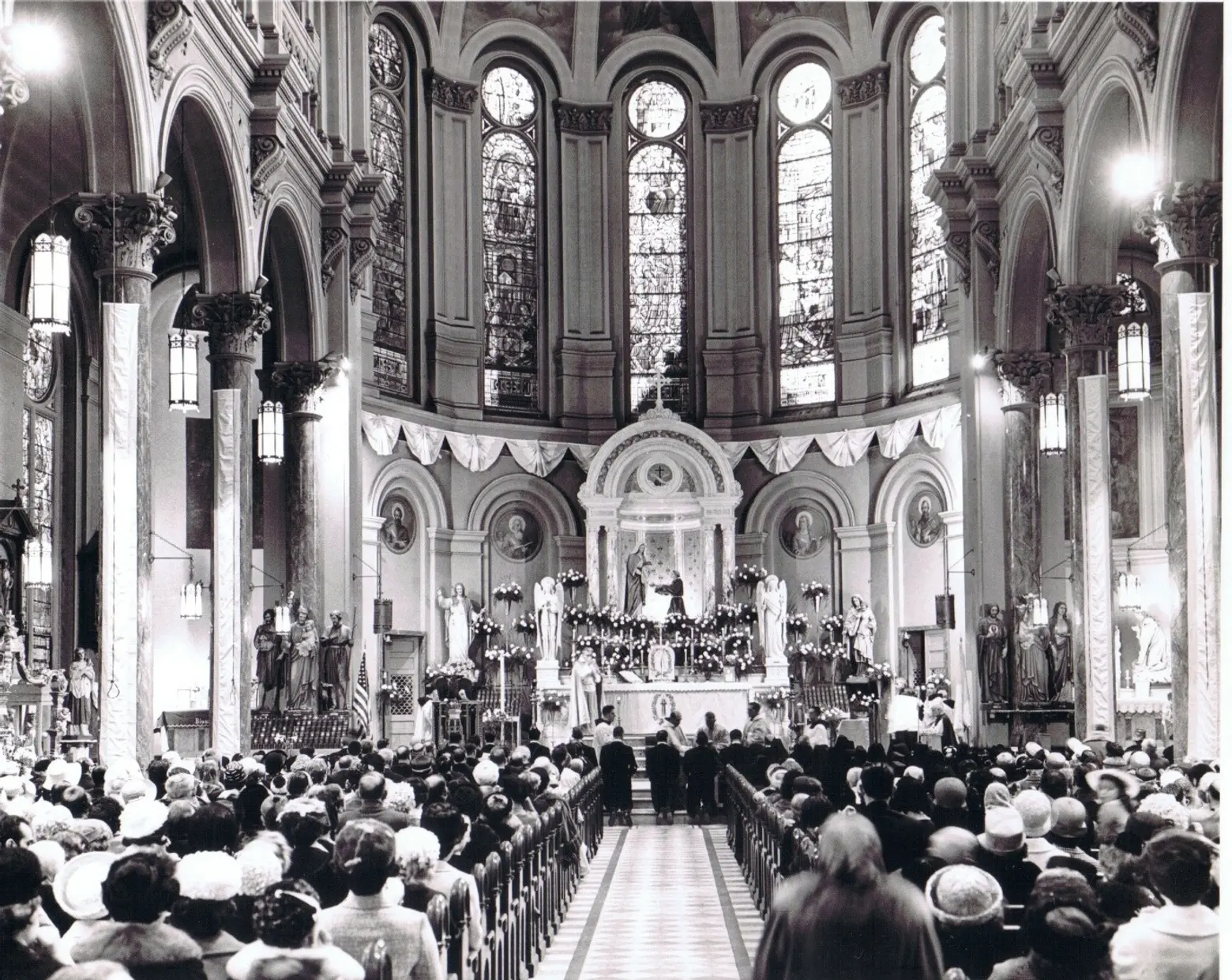 Original interior, courtesy of St. Anthony’s
Original interior, courtesy of St. Anthony’s
St. Anthony of Padua Church, 155 Sullivan Street
Built in 1886, St. Anthony’s is the very first and oldest church built in America for an Italian-American congregation. The grand and impressive Romanesque Revival structure replaced an earlier Congregational/Baptist church the congregation had been renting on the site, reflecting the waves of Italian immigrants which began to wash over and transform lower Manhattan after the unification of Italy in 1870. In the 1920s Houston Street was widened and the buildings to the north of St. Anthony’s were demolished, giving it the much more prominent and visible siting on Houston Street it enjoys today.
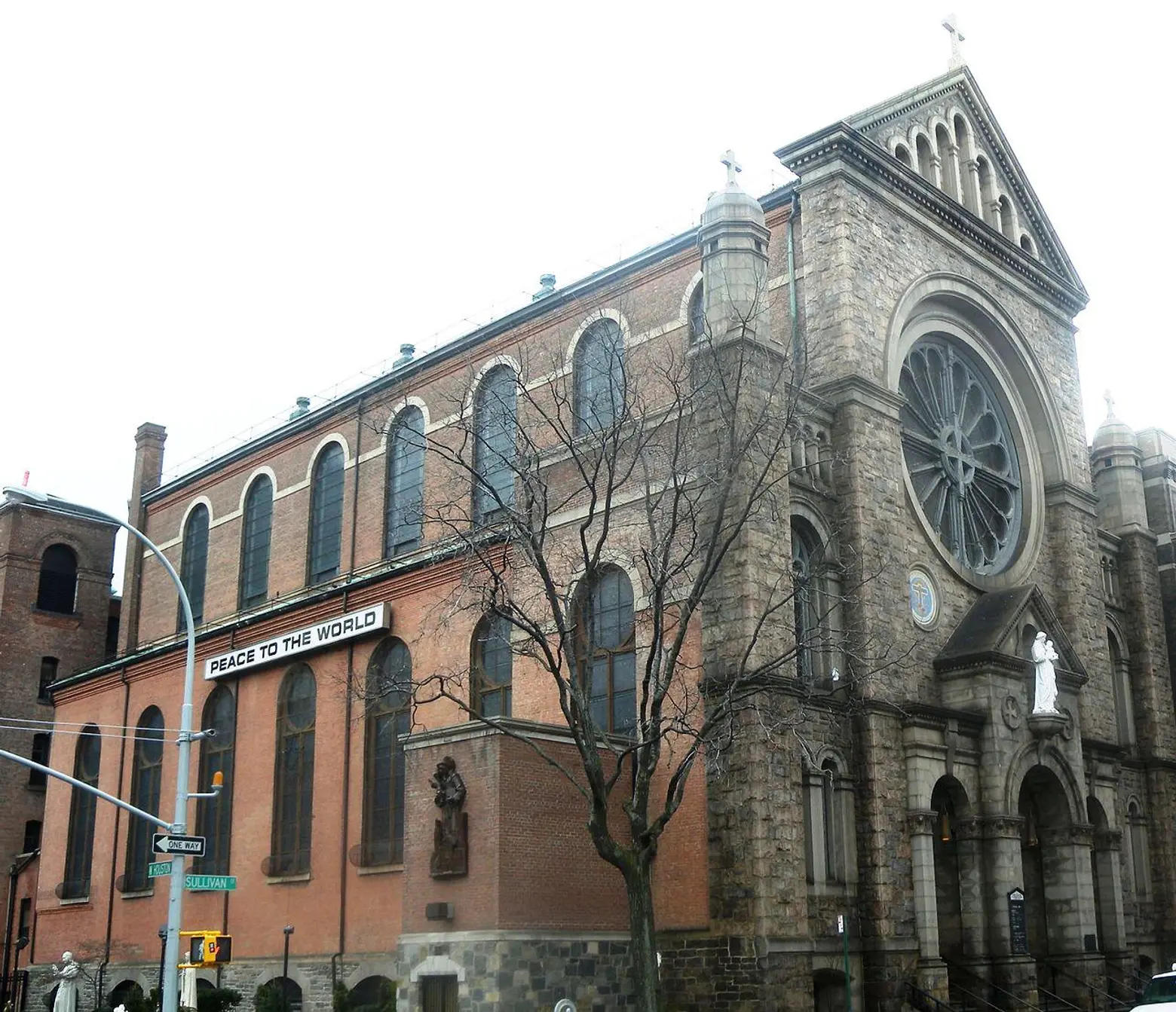 St. Anthony of Padua today, via Wiki Commons
St. Anthony of Padua today, via Wiki Commons
By the second half of the 20th century, a significant community of Portuguese immigrants had moved into the blocks surrounding St. Anthony’s, many of whom joined the congregation along with its long-standing Italian-American parishioners. By a wonderful coincidence, though St. Anthony spent much of his life in Italy and died in Padua, he was actually of Portuguese origin and is thus embraced and venerated by both Italian and Portuguese Catholics. In 2016, the church and its surroundings were landmarked as part of the Sullivan-Thompson Historic District.
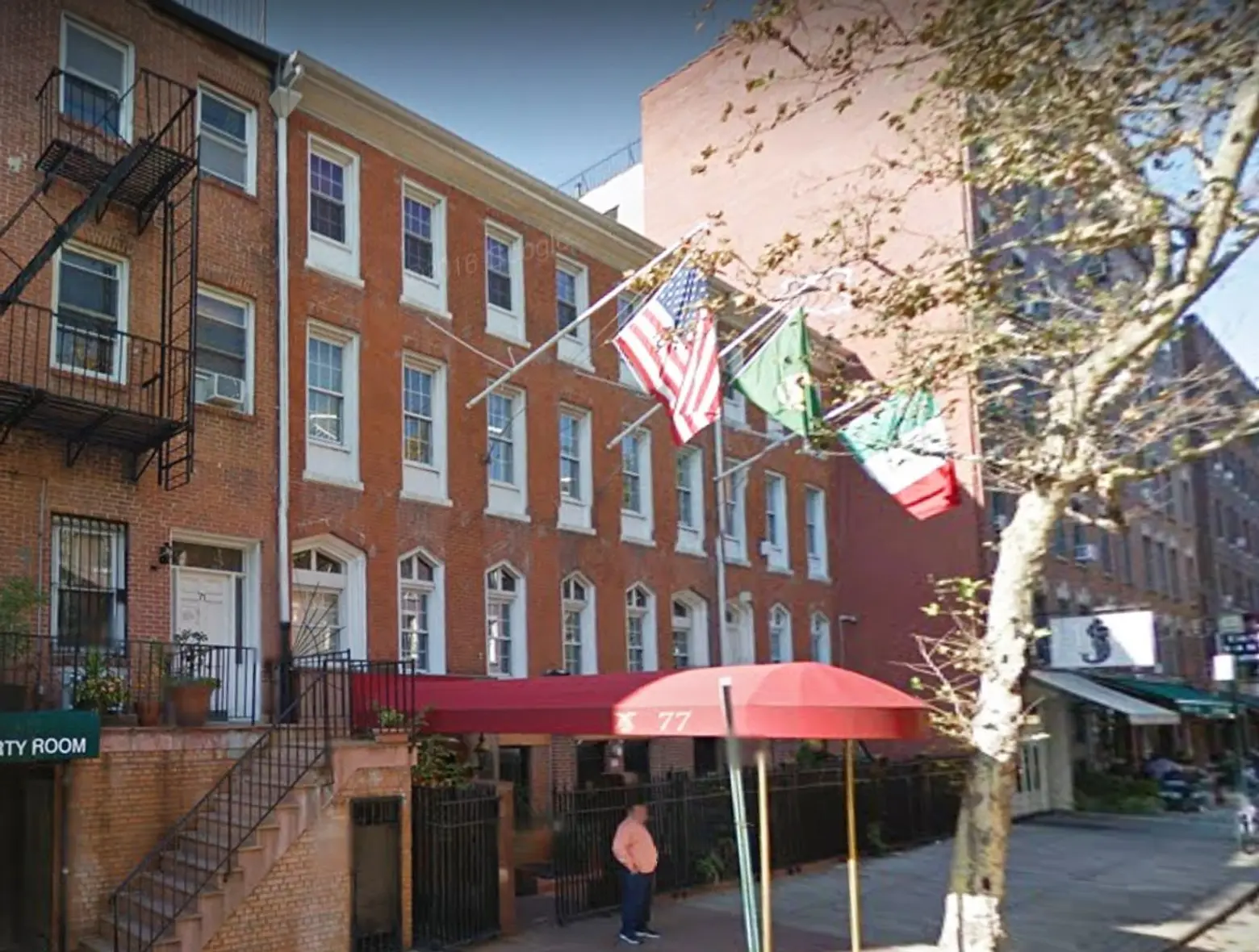 Google Street View of 77 MacDougal Street
Google Street View of 77 MacDougal Street
Tiro A Segno, 77 MacDougal Street
This private club established in 1888 bills itself as the “oldest Italian heritage organization in the United States.” Housed in three rowhouses dating to 1850, the club’s name literally means “Fire at the Target” and is an Italian idiom which roughly translates to “shooting practice.” That’s because the club, among other things, originally included a shooting range in the basement as well as a bocce court. Today it is more typical to find visitors enjoying fine wine or cuisine than engaging in target practice. The club claims as past members Giuseppe Garibaldi, who unified Italy; the tenor Enrico Caruso, and Fiorello H. LaGuardia, one of New York City’s most revered Mayors and the first Italian-American to hold that position.
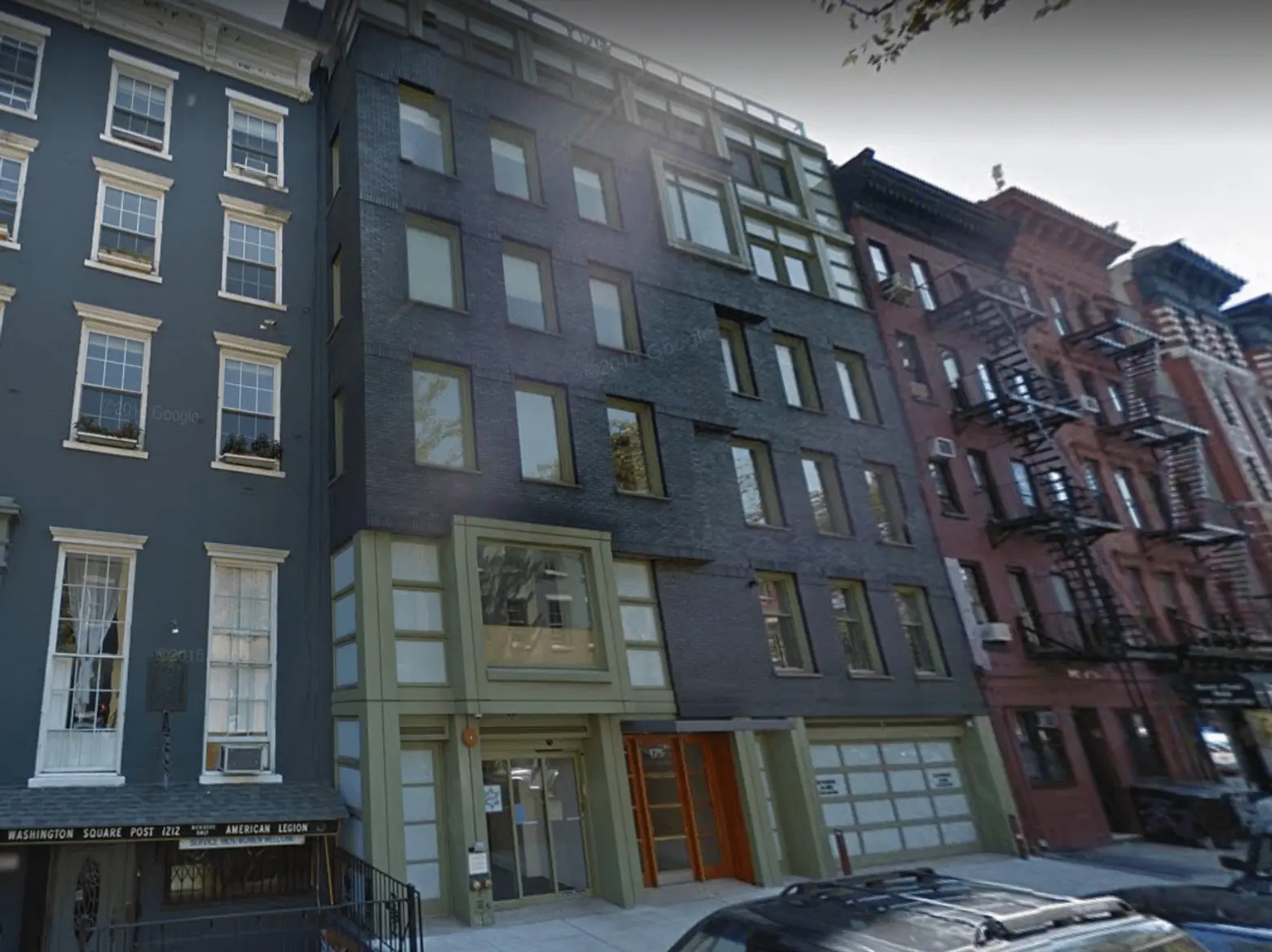 Google Street View of 177 Sullivan Street today
Google Street View of 177 Sullivan Street today
Fiorello LaGuardia Birthplace, 177 Sullivan Street
The “Little Flower” (Fiorello meant flower, and LaGuardia was 5’2’’) was considered by many New York’s greatest Mayor, as he steered the city through the Great Depression and World War II. He was born in 1882 in a rowhouse located on this site. The birthplace of the city’s first Italian-American mayor was at the time called 7 Varick Place (the name change to Sullivan Street came in the 1920s), but unfortunately, the building collapsed in 1987, and no trace of it remains today.
It was replaced in the 1990s by the six-story gray and green office building seen there today, which now houses Congregation Magen David. This is less incongruous with its historic connection to LaGuardia than it may at first seem; LaGuardia’s mother Irene Coen was an Italian Jew, though he was raised as an Episcopalian (his father was a lapsed Catholic). After LaGuardia’s death in 1947, the stretch of nearby West Broadway north of Houston Street was named LaGuardia Place in his honor, and in 1994 a statue of LaGuardia was erected on city-owned greenspace along the street between Bleecker and West 3rd Street.
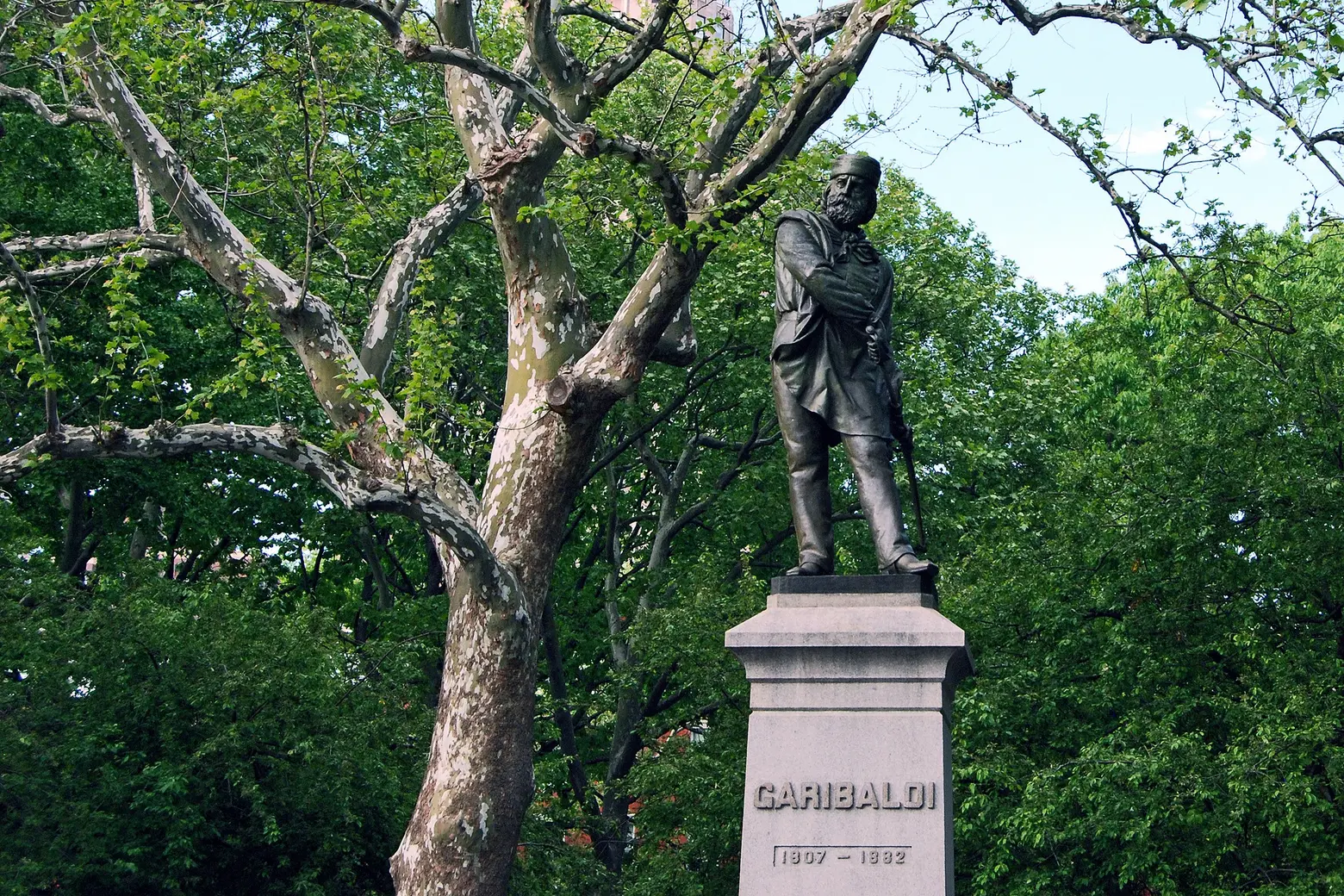 Garibaldi Statue via Harvey Barrison/Flickr
Garibaldi Statue via Harvey Barrison/Flickr
Garibaldi Statue, Washington Square Park
General Giuseppe Garibaldi (1807–1882) is the 19th-century Italian patriot and military leader who successfully fought for the unification of Italy, which was completed in 1870. Unification, perhaps ironically, led to the mass migration of Italians to America, including the Village. Garibaldi lived in New York in 1850-1, briefly near the Village. Not long after his death, the editors of the Italian-American newspaper Progreso Italio-Americano began raising funds for a statue to memorialize the Italian patriot and hero. The bronze statue on a granite pedestal was dedicated six years later. According to the NYC Parks Department, the sculptor of the statue, Giovanni Turini (1841–1899) was a volunteer member of Garibaldi’s Fourth Regiment during the war between Italy and Austria in 1866.
In 1970, the Garibaldi monument was moved about fifteen feet to the east to allow for the construction of a promenade in Washington Square. A glass vessel containing documents from the 1880s was found under the original base of the statue. The documents included newspaper accounts of Garibaldi’s death, a history of the Committee for the Monument of Garibaldi, the organization that helped place the statue, and a poster for and news clippings about the monument’s dedication.
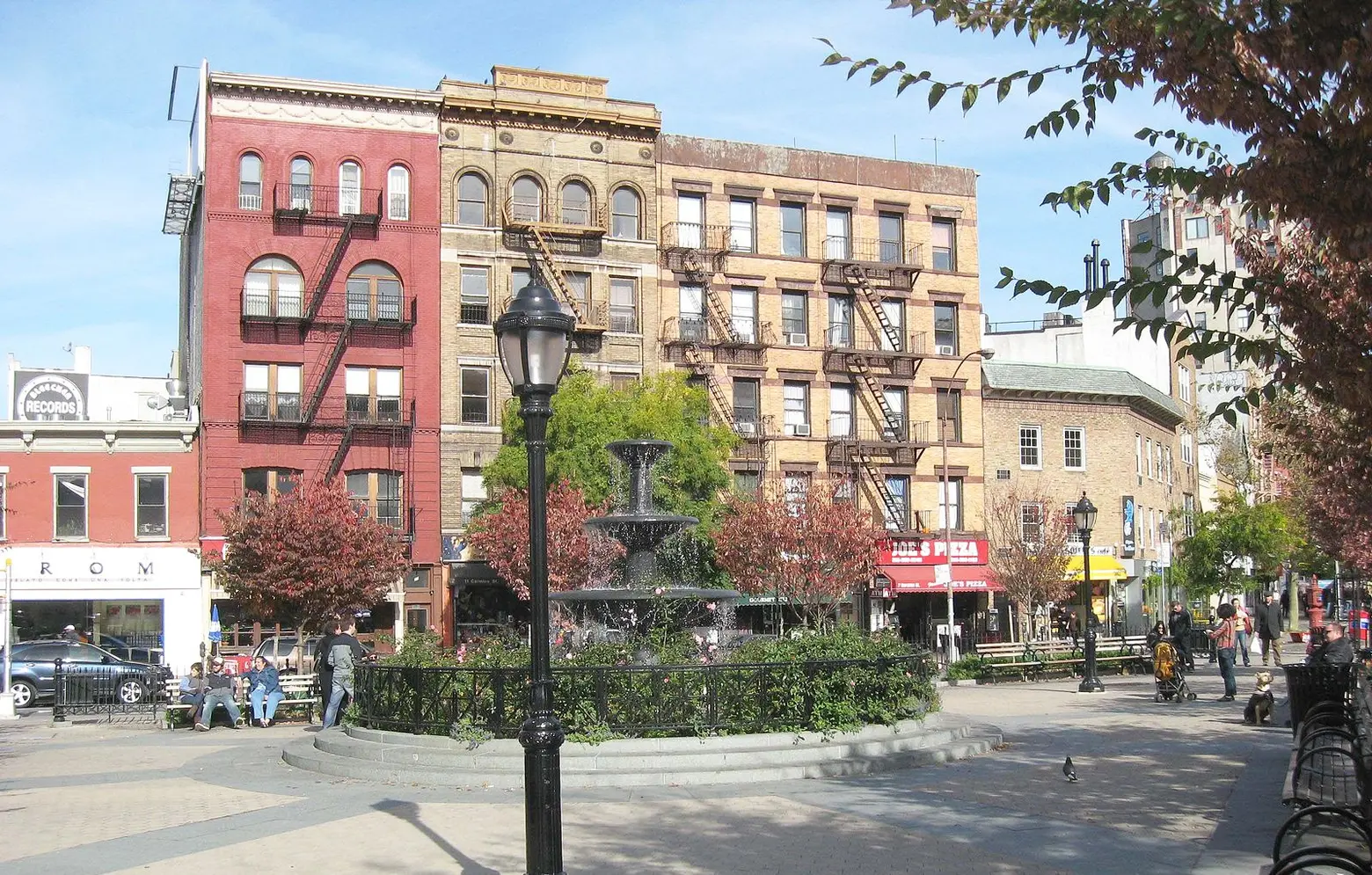 Father Demo Square, via Wiki Commons
Father Demo Square, via Wiki Commons
Father Demo Square, Sixth Avenue at Bleecker and Carmine Streets
This piazza-like space has a central fountain and looks as though it should be at the center of Italian hill town. Created in 1923 by the leftover open space from the demolition of multiple buildings for the extension of Sixth Avenue south of 3rd Street, the public space is named for Father Antonio Demo, pastor from 1900 to 1936 of the nearby Our Lady of Pompei Catholic Church. Demo was pastor of Pompei Church when scores of his parishioners were injured or killed in the nearby Triangle Shirtwaist Factory Fire in 1911, most of the victims of which were Jewish or Italian immigrant women who lived in nearby Lower Manhattan neighborhoods, including the South Village, and ministered to the victims and their families.
In 1923, when it became known that Our Lady of Pompei Church would be demolished for the extension of Sixth Avenue, Demo organized the campaign to buy another property and to build a new church, rectory, and parochial school. The present-day Our Lady of Pompei church opened in 1927 just a few yards west of the original church at Bleecker and Carmine Streets. Demo died in 1936, and the square was named in his honor in 1941.
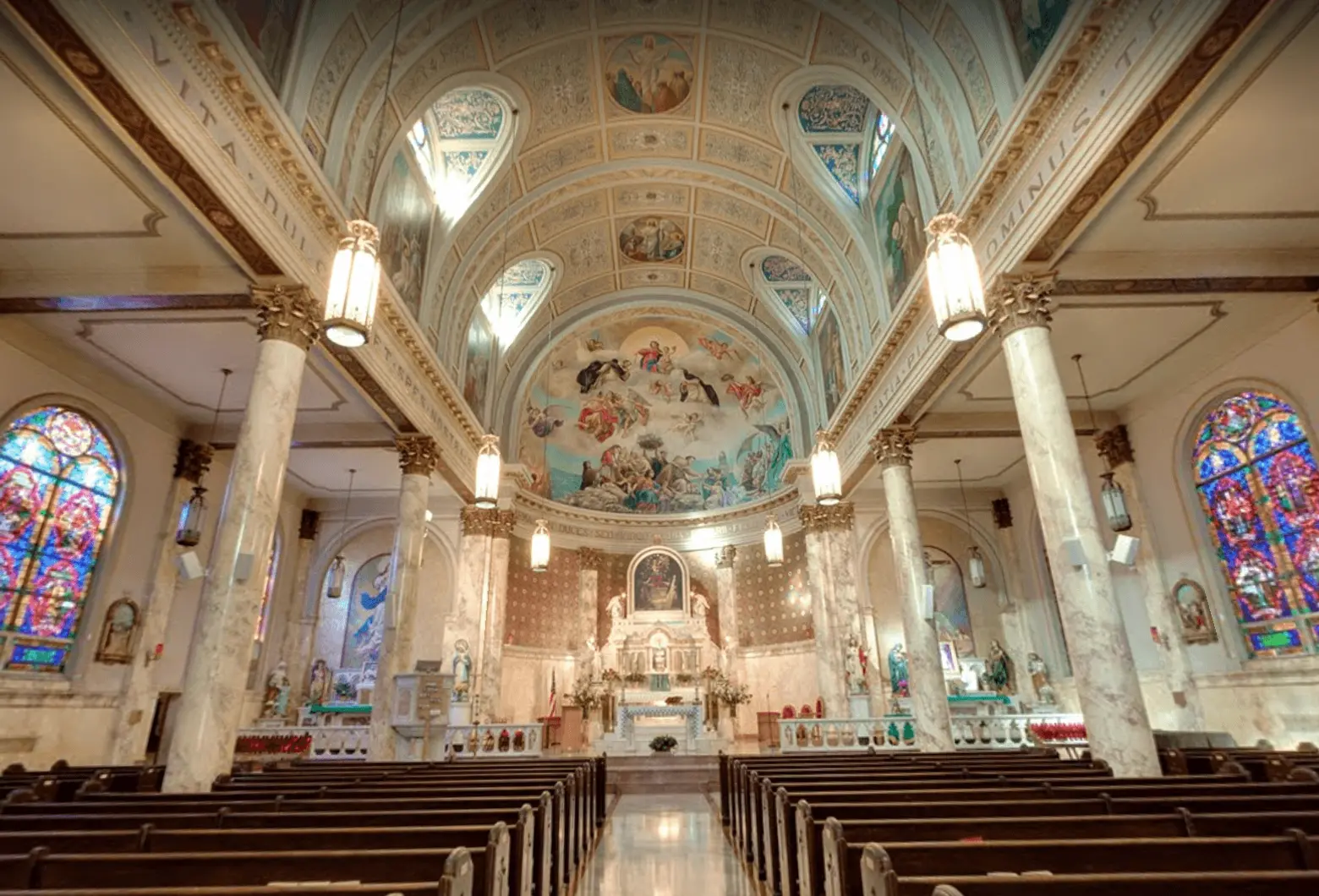 Interior of Our Lady of Pompei, via Google Street View
Interior of Our Lady of Pompei, via Google Street View
Our Lady of Pompei Church, Bleecker and Carmine Streets
This is the fourth location of this historically Italian-American Church, founded in 1892. Prior church structures that housed the congregation have all been demolished, but the grand current Renaissance-Revival style building was constructed in 1927 to the designs of Italian-American architect Matthew del Gaudio. The church is rooted in the Saint Raphael Society for the Protection of Italian Immigrants, established to prevent the exploitation of immigrant laborers.
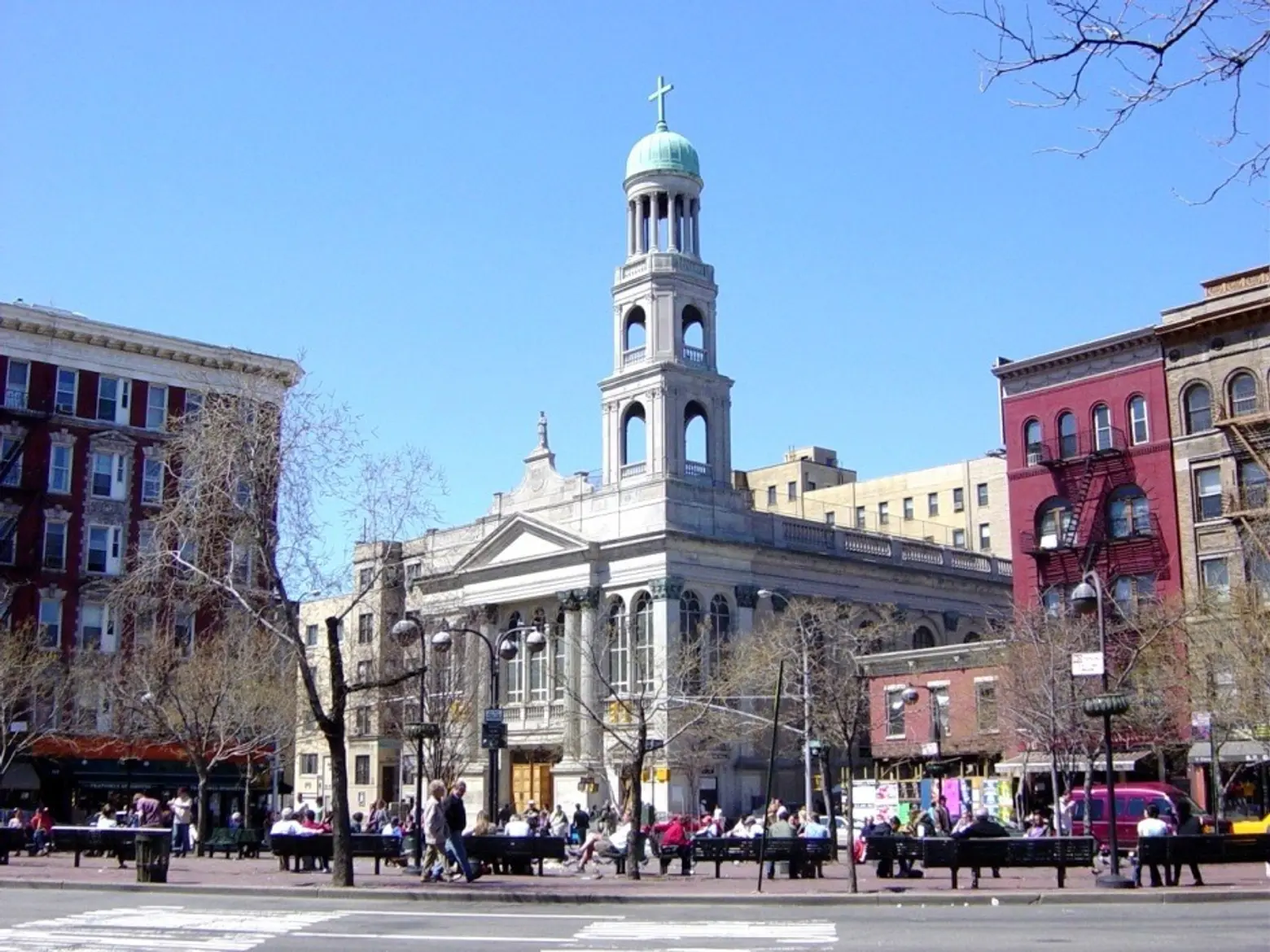 Our Lady of Pompei looking across Father Demo Square, via GVSHP
Our Lady of Pompei looking across Father Demo Square, via GVSHP
It sits at the intersection of what had been two of the main streets of the Italian South Village, Bleecker and Carmine Streets, which until just a few years ago were both largely populated with stores and shops reflecting the area’s Italian-American history and residents. While it is often assumed that Carmine Street’s name relates to the neighborhood’s Italian-American history, in fact the name substantially pre-dates the Italian immigration to the area, and honors Nicolas Carman, an official of Trinity (Episcopal) Church, originally established by the King of England, which held (and still does) much of the land in this area and to the south.

Caffe Reggio, 119 MacDougal Street
This coffeehouse first opened at this location in 1927 and is where cappuccino was first introduced to America by owner Domenico Parisi. The café’s original espresso machine can still be found in the rear of Caffe Reggio, which dates to 1902 and was bought by Parisi in 1927 when he opened the café. One of the oldest coffeehouses in America, it has been featured in films “The Godfather Part II,” “Next Stop, Greenwich Village,” and “Inside Llewyn Davis,” among many others.
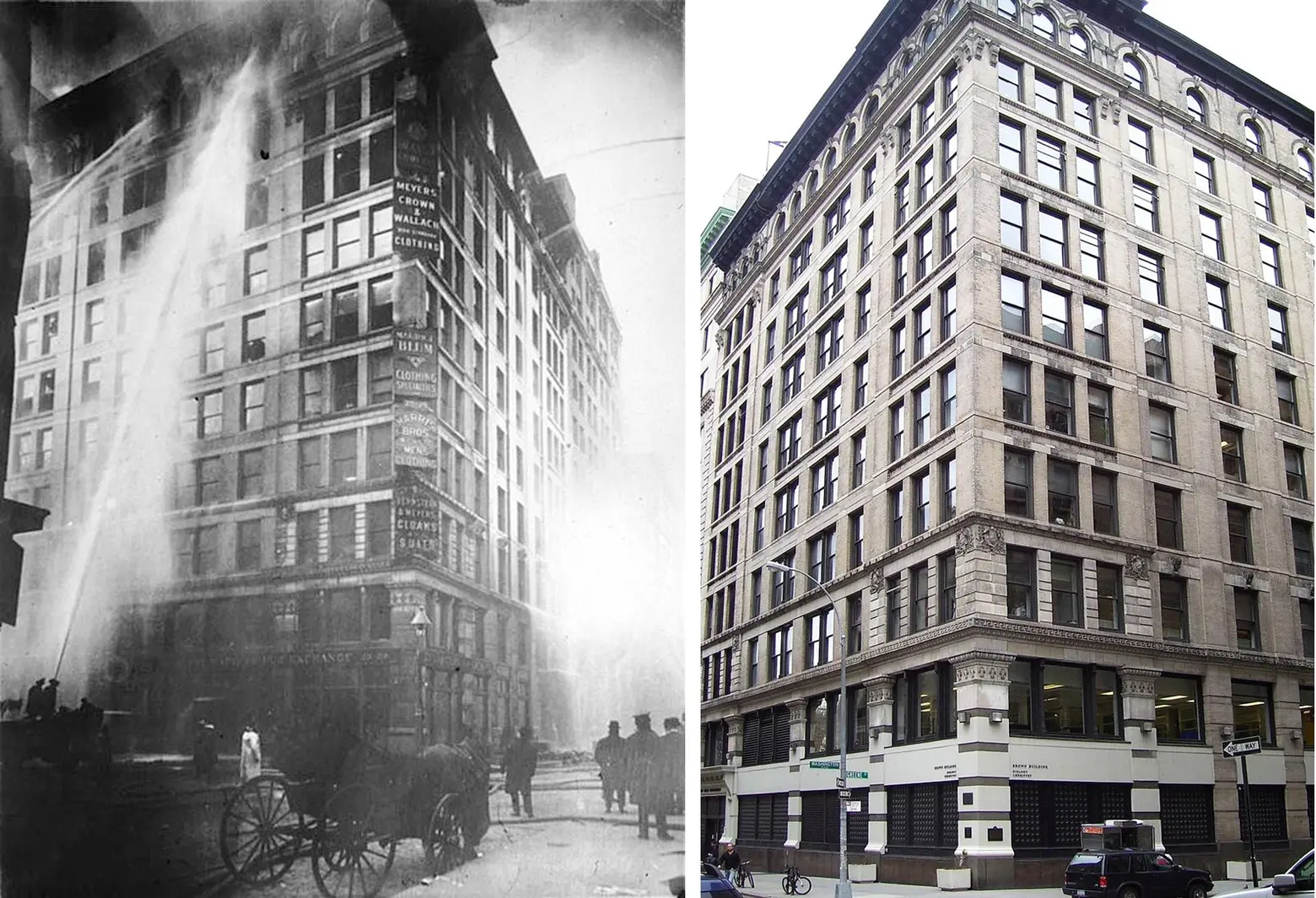 The Triangle Shirtwaist Factory Fire via Wiki Commons (L); View of the Brown Building today via Wiki Commons (R)
The Triangle Shirtwaist Factory Fire via Wiki Commons (L); View of the Brown Building today via Wiki Commons (R)
Triangle Shirtwaist Factory Fire Building (now the NYU Brown Building, 23-29 Washington Place)
On March 25, 1911, the deadliest industrial disaster in New York City history and one of the deadliest in U.S. history took place on this site when a fire tore through the 8th, 9th, and 10th floors of the building. 146 garment workers – mostly women, largely recent Italian and Jewish immigrants – perished in the blaze, unable to escape because the doors were locked to prevent unauthorized breaks. The victims died of burns, smoke inhalation, and by jumping to their deaths, the only possible means of escape. Many lived in the nearby predominantly Italian-American South Village neighborhood, as well as other parts of Greenwich Village, the Lower East Side, and Little Italy. The tragedy resulted in dramatic changes to workplace safety, fire, labor, and building codes, and to the rise of the International Ladies Garment Workers’ Union as a powerful force in organized labor.
+++
This post comes from the Greenwich Village Society for Historic Preservation. Since 1980, GVSHP has been the community’s leading advocate for preserving the cultural and architectural heritage of Greenwich Village, the East Village, and Noho, working to prevent inappropriate development, expand landmark protection, and create programming for adults and children that promotes these neighborhoods’ unique historic features. Read more history pieces on their blog Off the Grid.

